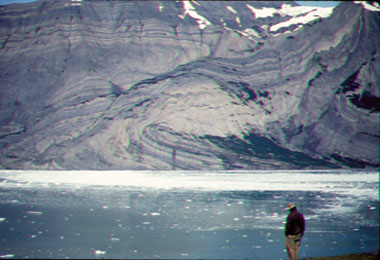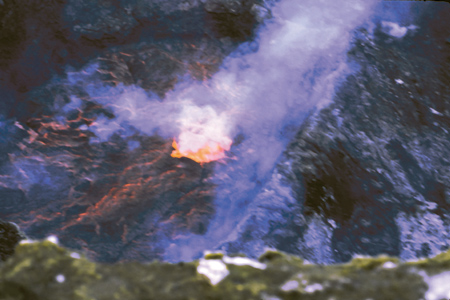Every month, we'd like to feature one of your photos from anywhere in the world and invite other readers to guess where it was taken. Look every month in the print Geotimes for a new photo. Following are clues, answers and winners from past issues.


| Do you have slides and photos
you've collected from field work or vacations?
Every month, we'd like to feature one of your photos from anywhere in the world and invite other readers to guess where it was taken. Look every month in the print Geotimes for a new photo. Following are clues, answers and winners from past issues. |
 |
| The first 10 readers
to identify the location pictured in the current print version of Geotimes
receive a Where on Earth? T-shirt. From these 10 winners we will draw the
names of the two respondants who will receive a Brunton
8099 EclipseTM compass. Please note that
all contestants are eligible to win one compass per year and a maximum
of three T-shirts per year.
Click here
to submit a guess for this month's Where on Earth?
contest.
Submit
photos for Where on Earth?
|
 |
Clues:
1. The fold and formation shown here are named after a nearby fishing and logging town. 2. Just out of the picture to the left, a glacier hits tidewater. The glacier was named after the first professor of geology at Princeton University -- a man who has also had three mountains, one crater on the Moon and a hall on the Princeton campus named in his honor. 3. While the amount of deformation might suggest otherwise, these rocks are relatively young (Pliocene to Pleistocene). Scroll down for the answer
...
|
| Answer:
Guyot Hills, adjacent to the Guyot Glacier in Icy Bay, Alaska. Photo and clues provided by Scott Broadwell. |
June winners:
Ken Van Dellen (Grosse Pointe Park, MI)
Peter Heitzmann (Dale City, VA)
Ruth Jewell (Kettering, OH)
Jim Sukup (Carmel, IN)
Becky Ciske (Villa Park, IL)
Jessica Gorman (Washington, DC)
Michael A. Siemens (Rolla, MO)
Bill Frechette (Acworth, GA)
Christie M. O’Day (Tempe, AZ)
Brian W. Collins (Missoula, MT)
 |
Clues:
1. This 3,800m-high, active volcano was first described by a famous British explorer in 1841, but was not climbed until 1908 (by a group led by a famous Irish explorer). 2. The volcano is situated on an island and produces an unusual phonolitic lava containing up to 12 cm-long anorthoclase crystals. 3. The inner crater hosts a persistent convecting lava lake that frequently showers the crater and upper slopes with bombs. Scroll down for the answer
...
|
| Answer:
Mount Erebus stands at 3,794 feet on Ross Island in Antarctica. It was discovered by James Ross and first climbed by Ernest Shackleton and crew. Photo and clues from Rick Aster, Phil Kyle, and Bill McIntosh of New Mexico Tech. |
May winners:
Peter Heitzmann (Dale City, VA)
Edward Grew (Orono, ME)
Susan Milius (Washington, DC)
Rob McDowell (Atlanta, GA)
Nelson Andrekovic (Wickliffe, OH)
Sandra Stapp (Oceanside, CA)
Ruth Jewell (Kettering, OH)
Tom Parr (Reading, MA)
Matthew B. Morris (Pittsburgh, PA)
Dan Miggins (Denver, CO)
 |
Geotimes Home | AGI Home | Information Services | Geoscience Education | Public Policy | Programs | Publications | Careers |